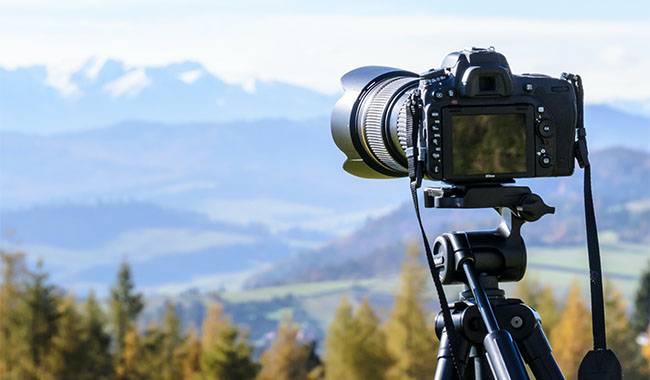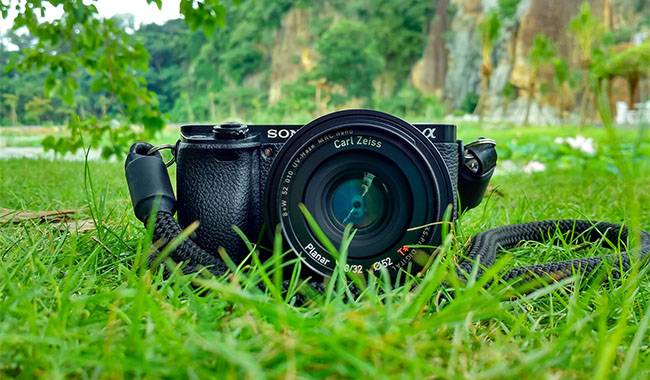
Many people go hiking and camping to take cool pictures. Some people climb mountains, some people go rafting, some people climb cliffs. And this article from LCN Outdoors will focus on how to prepare Photography Hiking Gear when camping.
Tip: If you want to bring back not only tick-borne encephalitis and burnt skin but also great photos, don’t stash your camera too far away. Don’t hide it in your backpack thinking that whenever there is a beautiful spot, I will stop and take it out to take pictures. A few times you may do this, but eventually, you will get tired of constantly taking off and putting on your backpack. You should always have your camera with you – it’s the only way to not pass a beautiful place and manage to capture something really unusual, like a star falling or a friend in the mud.
About Organizing Photography in Hiking
Many people hang their cameras around their necks, which is the easiest solution. But at the end of the day, the strap starts to exert a lot of pressure, stiffening your neck and trapezius muscles. It’s also very annoying to have the camera constantly dangling and hitting your abs or chest. If you want to wear it that way, make the strap a little tighter – not so long – so it hangs at your chest level and doesn’t dangle as much. Also, you can use the chest ties on the straps to hold it in place. And to reduce the stress on your shoulders and neck, use a wider strap.
How to carry your camera
I put my camera in a triangular case and secured it to the shoulder strap loop of my backpack with a carabiner camera buckle. It’s very convenient: the camera is easy to reach. If you choose a case with extra pockets, they are great for carrying things like GPS or goggles.
However, this method of carrying a camera has its drawbacks. If you bend over or walk uphill, the case will also start to shake and knock on your chest. But this is easily solved by purchasing a case with extra rings at the bottom. These can be used to secure the case to a backpack, for example to a belt.
Just like my camera, I often strap my tripod to the front so it’s always available. I spend most of my time hiking alone, and if I need to be alone in a scenic area, I have to shoot it myself. If the tripod is hanging in the back, sometimes I’m too lazy to unhook it from my backpack and the lens gets lost.

How to keep your camera safe
If you take your camera on a hiking trip, of course, you have to take care of its safety. If you just hang it around your neck, at some point it might hit a rock or drown in the creek you just drank from. So take care of a case. I have two of them. One has a waterproof rain cover, but it’s not airtight. The other is completely sealed – I carry it on hikes where there are sections that require rafting.
The extra pocket on the side pack for small items is a real lifesaver if you don’t have any pockets on your waistband.
Which lens to choose
When I’m hiking & camping, I use a universal zoom, 24-120 f/4. I have a camera with a full-size sensor. I can use this lens to shoot landscapes and some close-up details. I used to carry a lot of optics and my gear weighed 13 lb (6 kg), but then I bought this and found it to be adequate. If I need to shoot something wider, I just move farther away.
I generally don’t like super-wide angles like 14mm, when the corners are stretched out and the details on the horizon become as small as flies. For wide angles, and as a backup, I carry a 20mm compact fixed, but I don’t use it very often.
If you specifically want to photograph animals, you certainly need at least a 200mm zoom. But otherwise, a general-purpose zoom is usually enough – and less hassle to equip.
How to extend the battery life
And this is one of the main problems when hiking camping. First, you should first test how many shots your battery pack can last. Then you’ll know how many batteries to bring on a camping trip and whether you need to carry a power pack and charger.
Second, try not to look at what you’ve shot too often. Delete unnecessary photos and edit them at home. In other words, the plan is as follows: take a photo, take a quick look at the histogram (to see if it’s overexposed), zoom in to make sure you hit sharpness, and then forget about the photo. The LCD screen is the biggest drain on the battery. Reduce its brightness and don’t use Liveview and the battery life will be longer.
The battery also drains quickly when the shutter is open for long periods of time when shooting at night. In freezing weather, the battery drains even faster – stay warm and don’t discharge to zero.
Battery capacity cannot be checked correctly in cold conditions. After warming up, the display may show a few cells of power, for example, one cell for photography. But if you drain it, it won’t “come back to life” even after heating. However, when you get home and plug it into the charger, it will show 70% instead of 5% after a few minutes.
The one standard battery that came with the camera would last me a week of camping if I didn’t shoot at a slow shutter speed of a few seconds. In fact, I carry three of them with me.
As for the charger and external power pack: the combined weight of the extra batteries is much less.
Camera memory card
I try to use several small flash drives instead of just one. For example, two 64GB flash drives instead of just one 128GB. If something goes wrong with the large flash drive, all the material on it will be lost. Multiple flash drives allow you to save at least some of the material.
Many cameras have two memory card slots, and you have the option to copy your photos to 2 cards. I have never used this and wish I had the opportunity
What you need to know about night photography

If you want to shoot at night, then a flashlight will come in handy. It’s best to bring two. One on your forehead to make it easier for them to light up the camera on the tripod to change settings and focus. A second flashlight is useful if you want to highlight the tent from the inside in a nod to the classics. It can also be placed near the subject and focused into the flashlight to highlight where it needs to be focused as well. Of course, you can highlight it with your phone, but it’s usually inconvenient, it drains the battery, and it shuts down the gadget completely in the winter.
How to clean optical components
Carry a small roll of soft toilet paper in your pocket: There is no better way to wipe down optics in the rain or sleet than to wipe them down. Microfiber cloths most often smear water on glass rather than absorb it.
If you are cooking in a tent or vestibule or bringing your camera in from the cold, the optics may fog up from moisture. In this case, it is also convenient to wipe it with toilet paper, but it is best to warm up the camera before shooting in the tent.
Radio remote control
I have campaign assistants – radio remote controls for shooting. They work at great distances: 1312 feet (400 meters) of the line of sight is easy to shoot. They help a lot, especially when you are walking alone. If I need a person at a certain point in the landscape, I put the camera on a tripod, measure the composition, use the remote to the right point and start pretending that someone is taking a picture of me and I don’t even know it.
Tip: Just don’t confuse the radio remote with the IR remote. The latter only works near the IR sensor on the front of the camera and in a direct line of sight.
The latest cameras can be controlled from your phone via Wi-Fi. I don’t have that luxury yet.
The remote is also useful when shooting at night to avoid shaking the camera on the tripod the moment you press the button. If you don’t have a remote, you can set your camera to a timer.
Go hiking, take pictures, get likes!